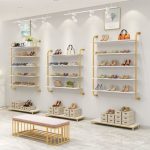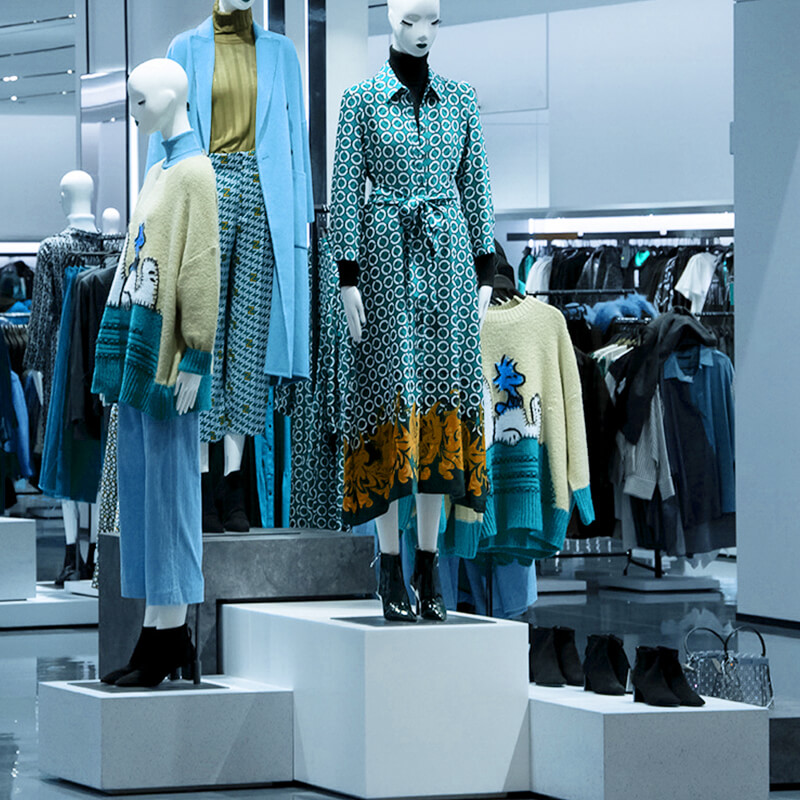
In the dynamic world of retail, visual merchandising has emerged as a powerful tool for capturing the attention of customers and driving sales. As a seasoned retail professional, I understand the significance of creating an immersive and appealing shopping experience that resonates with the target audience. Visual merchandising plays a pivotal role in achieving this goal by seamlessly blending art, creativity, and strategic planning.
What is visual merchandising?
Visual merchandising is the art and science of strategically presenting products and creating captivating displays to enhance the overall shopping experience. It encompasses the strategic placement, arrangement, and presentation of merchandise in a way that not only showcases the products effectively but also tells a compelling story. By carefully curating the visual elements within a retail space, visual merchandisers aim to attract customers, influence their purchasing decisions, and reinforce the brand’s identity.
Visual merchandising trends in the retail industry
The world of visual merchandising is constantly evolving, adapting to the latest trends and consumer preferences. As a retail professional, staying ahead of the curve is crucial. Here are some of the current visual merchandising trends shaping the retail industry:
- Experiential Retailing: Retailers are increasingly focusing on creating immersive and experiential shopping environments that engage multiple senses. This trend involves incorporating interactive elements, augmented reality, and unique installations that encourage customer participation and social sharing.
- Sustainability and Eco-Consciousness: With consumers becoming more environmentally conscious, retailers are incorporating sustainable and eco-friendly elements into their visual merchandising strategies. This includes using recycled materials, promoting eco-friendly products, and highlighting the brand’s commitment to sustainability.
- Technology Integration: The integration of technology in visual merchandising is becoming increasingly prevalent. This includes the use of digital signage, interactive displays, and even virtual reality experiences to enhance the shopping journey and provide customers with a unique and engaging experience.
- Localization and Personalization: Retailers are recognizing the importance of tailoring their visual merchandising efforts to specific locations and demographics. This involves incorporating local elements, cultural references, and personalized touches to create a more relatable and meaningful shopping experience for customers.
Benefits of Visual Merchandising
Effective visual merchandising offers numerous benefits for retailers, including:
Attracts More Customers
- First Impressions Matter: Visually appealing storefronts and window displays can capture the attention of passersby, enticing them to enter the store. A well-designed exterior can significantly increase foot traffic.
- Memorable Experiences: Engaging displays create lasting impressions that encourage customers to return. A unique visual presentation can make a store stand out in a competitive market.
Increases Sales
- Encourages Impulse Purchases: Effective visual merchandising can lead to spontaneous buying decisions by showcasing products in a way that highlights their features and benefits. Strategically placed items can direct customer attention to high-margin products.
- Enhances Product Visibility: By organizing products attractively and logically, retailers can make it easier for customers to find what they need, thus increasing the likelihood of purchases.
Strengthens Brand Identity
- Communicates Brand Values: Visual merchandising reflects a retailer’s brand personality, helping to establish a consistent identity across all customer touchpoints. This consistency builds brand recognition and loyalty.
- Increases Brand Awareness: Attractive displays can generate social media buzz as customers share their experiences online, further promoting the brand without additional marketing costs.
Improves Customer Experience
- Engages Multiple Senses: Incorporating elements like lighting, color, and even scent can create a multi-sensory shopping experience that resonates emotionally with customers, enhancing their overall experience.
- Facilitates Navigation: Thoughtful store layouts and clear signage help guide customers through the shopping environment, making it easier for them to find products and enjoy their shopping journey.
Boosts Customer Loyalty
- Creates Emotional Connections: A positive shopping experience fosters emotional ties between customers and the brand, encouraging repeat visits and long-term loyalty.
- Encourages Word-of-Mouth Marketing: Satisfied customers are likely to recommend the store to friends and family, further expanding the customer base through organic referrals.
Elements of effective visual merchandising
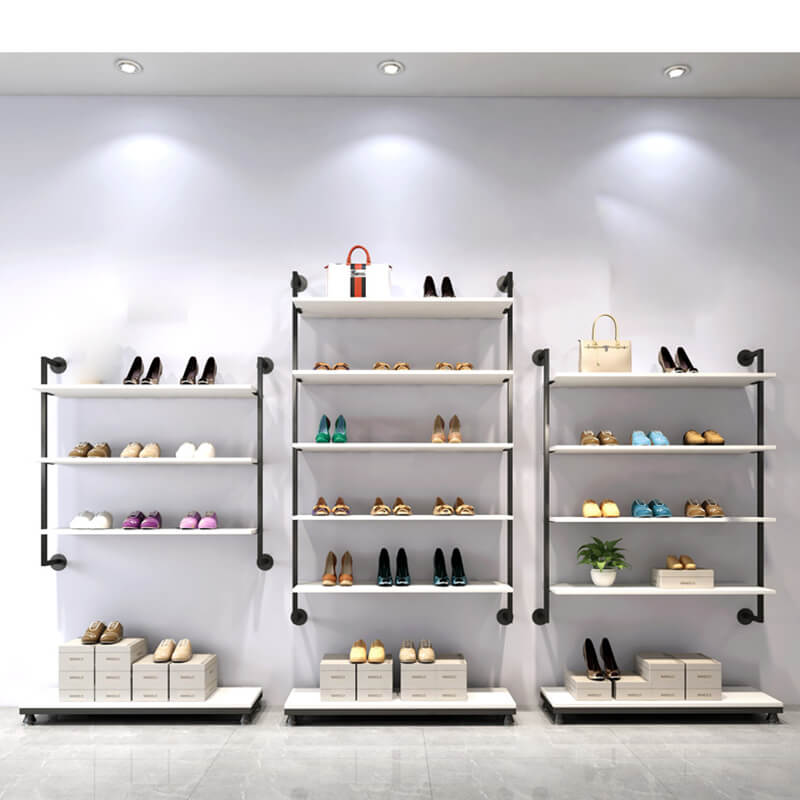
Successful visual merchandising involves the careful orchestration of various elements to create a cohesive and impactful display. Here are some key elements that contribute to effective visual merchandising:
Color
- Emotional Impact: Color schemes significantly influence customer perceptions and emotions. Different colors evoke different feelings; for example, red can create urgency, while blue can instill trust. Consistent use of colors across displays helps reinforce brand identity.
- Psychological Triggers: Understanding color psychology allows retailers to craft environments that resonate with their target audience and enhance the shopping experience.
Lighting
- Highlighting Products: Proper lighting draws attention to specific products or areas within the store. Bright lights can energize a space, while softer lighting can create a more relaxed atmosphere.
- Mood Setting: The right lighting can influence customer behavior and mood, making it a critical element in creating an inviting shopping environment.
Focal Points
- Attention Grabbers: A focal point is a key element designed to capture customers’ attention, typically placed at eye level. This could be a standout product or an attractive display that encourages exploration.
- Guiding Customer Flow: Well-defined focal points help guide customers through the store, directing their attention to specific areas or products.
Store Layout
- Traffic Flow: The arrangement of products and pathways influences how customers navigate the store. A well-planned layout encourages exploration and maximizes product exposure.
- Zoning: Dividing the store into distinct zones (e.g., new arrivals, sales, seasonal items) helps customers find what they need while promoting related products.
Texture
- Sensory Appeal: Texture adds depth and interest to displays, appealing to both visual and tactile senses. Incorporating various textures can create a more immersive shopping experience.
- Brand Representation: The choice of materials and finishes can reflect the brand’s identity, enhancing its overall aesthetic and appeal.
Signage
- Informative and Engaging: Clear signage helps communicate promotions, product information, and brand messaging effectively. It guides customers through the store and enhances their understanding of product offerings.
- Visual Hierarchy: Effective signage uses size, color, and placement to establish a visual hierarchy that directs customer focus where it is needed most.
Props and Accessories
- Enhancing Displays: Props can complement products by providing context or telling a story about how they can be used. This creative use of accessories adds interest and encourages customers to envision the products in their own lives.
- Cross-Promotion: Using props strategically allows retailers to cross-promote related items, increasing the likelihood of additional purchases.
The Rule of Three
- Visual Balance: Arranging products in groups of three creates visual interest and balance, making displays more engaging. This principle draws the eye naturally through asymmetry while maintaining harmony.
Types of visual merchandising
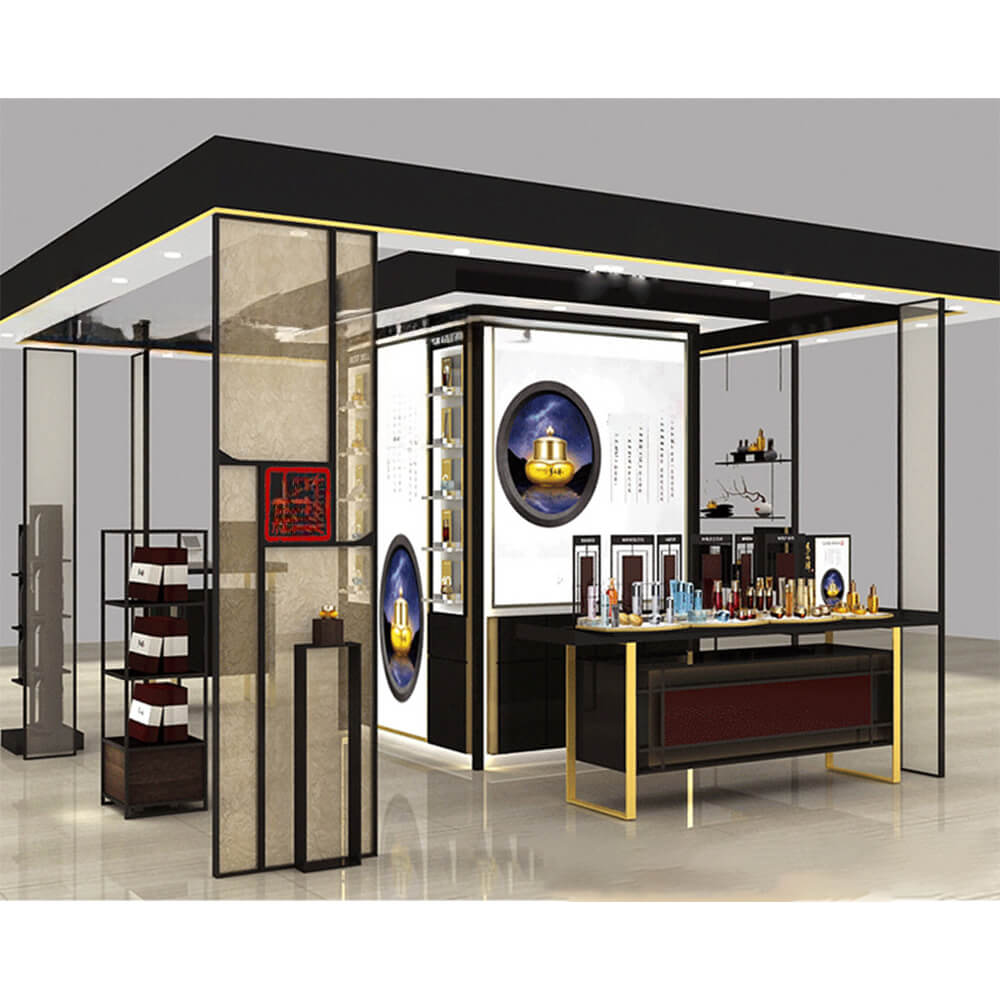
Visual merchandising can take various forms, each serving a specific purpose and catering to different retail environments. Here are some common types of visual merchandising:
1. Window Displays
- Purpose: Window displays serve as the first point of contact between the store and potential customers. They are designed to attract attention and entice passersby to enter the store.
- Features: These displays often showcase new arrivals, seasonal promotions, or thematic presentations that reflect current trends.
2. In-Store Displays
- Purpose: In-store displays guide customers through the shopping experience and highlight specific products or promotions within the store.
- Types: This category includes various setups such as end caps, product islands, and themed sections that align with the overall brand identity.
3. Point-of-Purchase (POP) Displays
- Purpose: Positioned near checkout areas or high-traffic zones, POP displays encourage impulse purchases by showcasing small, often low-cost items that customers might add to their baskets.
- Features: These displays can be standalone units or integrated into existing shelving systems to maximize visibility.
4. Interactive Displays
- Purpose: Interactive displays engage customers by allowing them to touch, try, or use products, creating memorable experiences that enhance brand interaction.
- Examples: Touchscreen kiosks, augmented reality (AR) setups, and product sampling stations are common forms of interactive merchandising.
5. Digital Merchandising
- Purpose: Digital merchandising utilizes technology to create dynamic displays that can be updated in real-time, providing information and promotions tailored to customer preferences.
- Features: This includes digital signage, video walls, and interactive screens that showcase products in an engaging manner.
6. Mannequins
- Purpose: Commonly used in fashion retail, mannequins display clothing items in a way that helps customers visualize how they would look when worn.
- Types: Mannequins can vary in style, size, and positioning to convey different fashion messages or themes.
7. Bundling Displays
- Purpose: Bundling involves grouping complementary products together to demonstrate how they can be used together, encouraging customers to purchase multiple items.
- Examples: For instance, displaying a complete outfit with accessories or a kitchen setup with utensils and cookware can enhance perceived value.
8. Thematic Displays
- Purpose: These displays revolve around specific themes or seasons (e.g., holiday decorations, summer sales) to create a cohesive shopping experience that resonates with customers.
- Features: Thematic displays often incorporate props, colors, and signage that align with the chosen theme.
9. Floor Displays
- Purpose: Floor displays are freestanding units placed strategically throughout the store to draw attention to specific products or promotions.
- Examples: This includes dump bins for clearance items or promotional stands for seasonal products.
10. Shelf Displays
- Purpose: Organized shelf displays maximize product visibility and accessibility while maintaining a clean and appealing layout.
- Techniques: Techniques such as vertical stacking, color blocking, and strategic placement can enhance shelf displays’ effectiveness.
Techniques for creating eye-catching displays
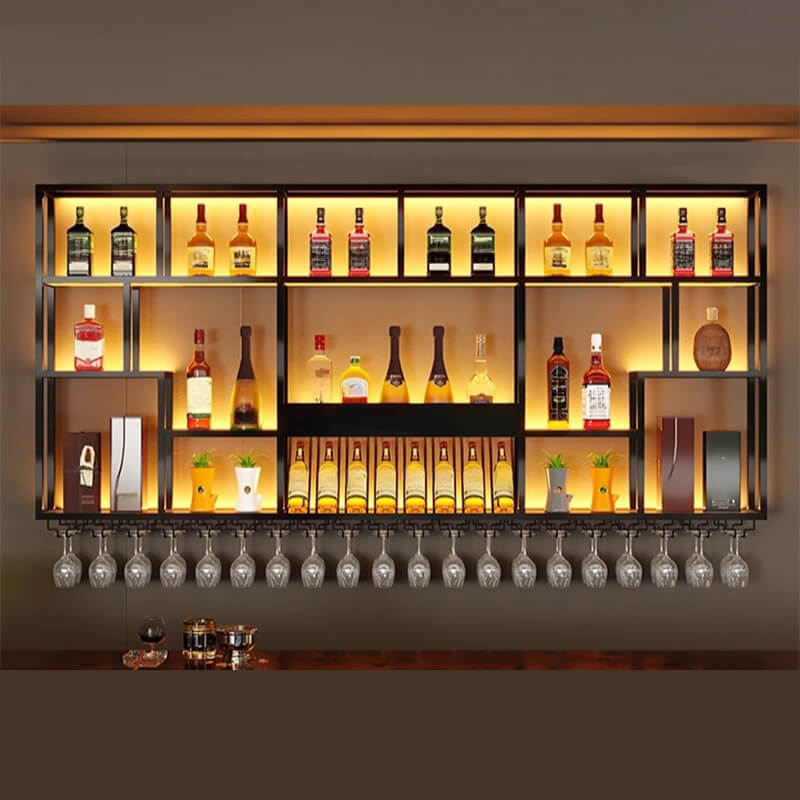
Crafting visually appealing and attention-grabbing displays is an art form that requires a combination of creativity, strategic planning, and attention to detail. Here are some techniques that can help create eye-catching displays:
1. Set a Strong Focal Point
Establishing a clear focal point in your display is crucial. This can be a standout product or an eye-catching element that draws attention immediately. Ensure that the focal point is at eye level, where it is most visible to passersby. Surround it with complementary items to create depth and interest, enhancing the overall visual appeal of the display. A well-defined focal point helps guide the viewer’s eye and encourages them to explore further.
2. Use Bold Colors
Incorporating bold colors into your displays can significantly enhance their visibility and attractiveness. Bright, contrasting colors can grab attention and evoke specific emotions, making your products more appealing. However, it’s essential to balance vibrant colors with neutral tones to avoid overwhelming customers. Consider seasonal themes or brand colors to maintain consistency while ensuring that the display remains eye-catching and engaging.
3. Incorporate Lighting Effectively
Lighting plays a vital role in visual merchandising by highlighting key products and creating ambiance. Use spotlights or soft lighting to draw attention to specific areas of the display, enhancing product features. Avoid harsh overhead lights that create unflattering shadows; instead, opt for layered lighting that adds warmth and depth. Thoughtful lighting not only enhances visibility but also influences the mood of the shopping environment.
4. Create Depth and Dimension
To make displays more engaging, incorporate elements that create depth and dimension. Layering products at varying heights can add visual interest and encourage customers to explore the display more thoroughly. Use props or backdrops that provide context or contrast, making the products stand out. This technique helps create a three-dimensional feel, inviting customers to engage with the display from different angles.
5. Tell a Story
Storytelling through visual merchandising can create emotional connections with customers. Develop a theme or narrative for your display that resonates with your target audience, showcasing how products fit into their lives or aspirations. Use props, signage, and product arrangements to convey this story effectively. A compelling narrative not only captures attention but also enhances customer engagement and encourages purchases.
6. Utilize the Rule of Three
The rule of three is a powerful design principle in visual merchandising that suggests grouping items in sets of three for maximum impact. This arrangement creates a sense of balance and harmony while allowing for variety in height and size among the items displayed. By using this technique, you can guide customers’ eyes through the display more naturally, making it easier for them to absorb information and appreciate the products.
7. Keep It Clean and Organized
A clutter-free display is essential for maintaining customer interest and engagement. Ensure that products are well-organized and easy to access, avoiding overcrowding or excessive decoration that can distract from the main items. Regularly refresh displays to keep them looking clean and appealing, as dust or disorganization can deter potential buyers. A tidy presentation reflects professionalism and enhances the overall shopping experience.
8. Incorporate Interactive Elements
Adding interactive elements to displays can significantly enhance customer engagement. Encourage customers to touch, try, or experience products firsthand through hands-on displays or technology like touchscreens. This interaction creates memorable experiences that foster emotional connections with the brand, increasing the likelihood of purchases. Interactive elements also provide opportunities for storytelling, making displays more dynamic and appealing.
Examples of successful visual merchandising campaigns
To better understand the power of visual merchandising, let’s explore some examples of successful campaigns that have captured the attention of customers and driven remarkable results:
- Anthropologie’s Immersive Displays: Anthropologie, a clothing and home decor retailer, is renowned for its visually stunning and immersive displays. Their stores often feature elaborate installations, incorporating unique props, vintage pieces, and intricate staging to create a whimsical and captivating shopping experience.
- Nike’s Experiential Displays: Nike, a leading sportswear brand, has embraced experiential visual merchandising by incorporating interactive elements into their displays. For example, their “Nike+ Run Club” installations feature treadmills and digital displays, allowing customers to experience the brand’s running products in an engaging and immersive way.
- IKEA’s Room Displays: IKEA, the Swedish furniture retailer, is known for its innovative and inspiring room displays. By creating fully furnished and decorated room setups, IKEA allows customers to visualize how different furniture pieces and accessories can be combined to create a cohesive and functional living space.
- Sephora’s Beauty Playground: Sephora, a popular cosmetics retailer, has mastered the art of visual merchandising by creating a “beauty playground” in their stores. Their displays feature interactive elements, such as testers and virtual try-on stations, allowing customers to explore and experience products in a fun and engaging way.
- Lush’s Sensory Displays: Lush, a handmade cosmetics company, has gained recognition for its sensory-driven visual merchandising approach. Their stores feature eye-catching displays showcasing their colorful and fragrant products, often incorporating natural elements like flowers and plants to create a unique and immersive shopping experience.
Unlock the power of visual merchandising and transform your retail space into a captivating and unforgettable shopping destination. Contact our team of expert visual merchandisers today to elevate your brand, drive sales, and create a truly remarkable customer experience.
Conclusion
In the ever-evolving world of retail, visual merchandising has emerged as a powerful tool for capturing customer attention, driving sales, and creating memorable shopping experiences. As a seasoned retail professional, I cannot overstate the importance of embracing this art form and staying ahead of the curve.
By carefully curating the visual elements within a retail space, retailers can effectively communicate their brand’s identity, influence customer perceptions, and guide purchasing decisions. From window displays to in-store installations, visual merchandising offers a multitude of opportunities to captivate and engage customers, fostering brand loyalty and driving business growth.
More Posts:
Top 10 Retail Display Manufacturers in UK
10 Top Acrylic Display Manufacturers USA
Point of Purchase(POP) Displays: What You Need to Know



